Courtesy of FreeDigitalPhotos - David Castillo Dominici
Last month I gave my perspective on how playground-related injuries and the different severity of injuries do not necessarily correlate with the notion a currently compliant playground will eliminate or substantially reduce the frequency or severity of injuries. The question which needs to be answered is whether or not performance requirements for both equipment and impact attenuation surface systems are addressing the level of injury, specifically life-threatening and debilitating. The international performance standards (ASTM F1487, ASTM F1292, EN1176, EN1177, CSA Z614) and the CPSC Handbook state in very general terms the types of injuries they are attempting to address. Each standard introduction and scope defines the objective of injury reduction. Every standard and guideline I have read admits and accepts the fact there will continue to be many injuries sustained by children at play. Play environments are not, and should not be, inspected as if the inspector were an OSHA inspector in a workplace. Children are expected to challenge themselves beyond their current level of proficiency. This is all part of child development. We must find balance between safety issues versus need for and benefits of risk taking versus hazard identification and removal.
Designers, manufacturers, owners, and operators should not be in the business of eliminating risk and graduated challenge. They should be about managing risk and eliminating hazards and allowing children to be children. There is some on any given day. Children need the opportunity to learn from their personal choices. Their decision on whether or not to undertake the challenge offered from the various graduated challenge opportunities within the play environment is part of that important personal development process.
I believe today’s playground standards and guidelines have provided much needed guidance to eliminate most of the hazards which existed on playgrounds decades ago. We may have eliminated head entrapment or most entanglements and impalements and deaths associated with these known hazards, but we still have children who are seriously hurt or even die as a result of some unfortunate accident. Over the past 25 years the National Recreation and Park Association (NRPA), and its National Playground Safety Institute (NPSI), have provided valuable training to better understand and eliminate the root causes of most severe playground injuries. Designers and manufacturers have taken these Federal recommendations, and voluntary industry consensus-based standards and in good faith have worked to provide more fun and challenge on the playground. The issue of what happens when a child fails to safely execute a skill necessary to complete some challenge on the playground still remains. Who will be held accountable and for what? The child? The parent? The owner of the playground? The manufacturer? The installer?
I ended last month’s column by outlining what I see as our next step. We must address the obstacles to meeting our current Standard’s scoping statements. These obstacles are:
- The need to reconcile the difference between the definitions for a “serious injury” according to the AIS System and the Consumer Product Safety Improvement Act and what our standard’s scope says.
- The playground industry’s agreement on the risk assessment process based on the possibility, probability, and level of injury likely from a fall to a surface just under 1000 HIC, which is a 16% risk of AIS >4.
- The need to accept the residual risk or harm after a risk assessment, which includes risk analysis and evaluation, has been conducted by the designer, manufacturer, and owner, and reasonable risk reduction or protective measures have been taken based on the intended use and reasonable foreseeable misuse of the equipment.
I believe we can make progress in providing more graduated challenge opportunities within the play environment while minimizing the liability exposure to designers, manufacturers, and owners of public play areas if we can address these issues. Frivolous lawsuits need to end. Nobody wants a child to get hurt, but we all know from experience we cannot protect each child from themselves when involved in free play. Children will fall and run into things and take risks they may not be developmentally ready to safely execute.
I would suggest a few things. I suggest we come up with a better definition or concept of exactly what we are trying to create within a child’s play environment that is easy to understand by the general public, policy makers, and the entire playground industry. We need to identify and understand the hazards we wish to eliminate from the play environment. And most importantly, we need to identify and agree upon what level of injury we as a society can live with as difficult as this may sound. For all this to be successful it will take a major ongoing public awareness and education campaign at all levels and with all stakeholders.
Without some clarification to our playground standards scoping statements and performance objectives, the dark cloud of uncertainty will continue to inhibit our ability and desire to provide the types of age appropriate challenges and risky play opportunitiesour children need and deserve.
I left you last month with this question. Can you define what tolerable or acceptable risk of some level of injury severity should be generally accepted by society? In order to answer this question we all need to have a broader understanding of injury severity. We have all suffered a scraped knee or elbow in our lifetime. Some scraped knees are more severe than others as we can probably all relate to as well. We know when a scrape becomes a laceration requiring a few stitches, it is more severe and also requires professional medical attention beyond what mom or dad can do for that skinned knee. When that laceration is so severe that it requires many more sutures at different layers of tissue, we know more medical skill and attention is required for this severity of injury.
Skin burns are another example of level of severity of injury. Who has not had a burn over the course of their life? Most of us have experienced a good sunburn at some time. It may not be healthy, but it is not life-threatening. It could be. The sun is a leading cause of skin cancer and many people have died as a result of skin cancer. What I have just introduced is the concept of probability. Basically, what are the odds that I might end up with skin cancer? Are you or society willing to accept those odds, because the cost to eliminate any chance of skin cancer is either too great or the odds of getting skin cancer is so small everyone is willing to live with the consequences. So what is tolerable or acceptable when it comes to injury severity?
In my previous column I introduced a means of assessing injury severity through the use of the Abbreviated Injury Scale (AIS). If you look on Wikipedia for AIS, you will find the following information. http://en.wikipedia.org/wiki/Abbreviated_Injury_Scale. See also www.trauma.org.
What is the Abbreviated Injury Scale (AIS)?
The Abbreviated Injury Scale (AIS) is an anatomically based, consensus derived, global severity scoring system that classifies each injury by body region according to its relative importance on a 6-point ordinal scale (1=minor and 6=maximal). AIS is the basis for the Injury Severity Score (ISS) calculation of the multiply injured patient.
Injuries are ranked on a scale of 1 to 6, with 1 being minor, 4 severe and 6 an unsurvivable injury. This represents the “threat to life” associated with an injury and is not meant to represent a comprehensive measure of severity. The AIS is not an injury scale, in that the difference between AIS1 and AIS2 is not the same as that between AIS4 and AIS5. There are many similarities between the AIS scale and the Organ Injury Scales of the American Association for the Surgery of Trauma.
|
AIS Score |
Injury |
|
1 |
Minor |
|
2 |
Moderate |
|
3 |
Serious |
|
4 |
Severe |
|
5 |
Critical |
|
6 |
Unsurvivable |
There are nine AIS chapters corresponding to nine body regions:
- Head
- Face
- Neck
- Thorax
- Abdomen
- Spine
- Upper Extremity
- Lower Extremity
- External and other.
The AIS provides standardized terminology to describe injuries and ranks injuries by severity. Current AIS users include health organizations for clinical trauma management, outcome evaluation and for case mix adjustment purposes; motor vehicle crash investigators to identify mechanism of injury and improve vehicle design; and researchers for epidemiological studies and systems development, all of which may influence public policy (laws and regulations).
Some users are interested in its standardized injury descriptor capabilities; some are interested only in its injury severity assessment; and some in both. The AIS Uses and Techniques course allows people to learn how to correctly code injuries according to established rules and guidelines, which increases interpreter reliability worldwide.
Health and research records of all types may be coded in a prospective manner. AIS codes may be assigned using algorithms that map other commonly used disease and injury codes — such as the WHO-originated International Classification of Diseases. Some of these maps have been programmed into trauma registry and medical record software, and may be proprietary tools. Some others have been made available by the original developers.
History of the AIS
In 1973, the Association for the Advancement of Automotive Medicine (AAAM) assumed the lead role for continuing the development of a scale to classify injuries and their severity, originally begun by a joint committee of the American Medical Association (AMA), Society of Automotive Engineers and the AAAM in 1969. The first scale was published in 1971 in the Journal of the AMA, titled: “Rating the Severity of Tissue Damage – The Abbreviated Injury Scale.” Publication of the 1980 revision of the AIS was enthusiastically embraced by the trauma research community as a useful and reliable injury assessment tool. Today, the AIS is the global system of choice for injury data collection and has become the basis for a number of derivative scales in use (e.g., Injury Severity Score, TRISS, ASCOT). Over the years, the AIS has been translated into French, German, Italian, Chinese, Spanish, and Japanese.
Today
The AIS has been continuously improved since its inception. The current edition, AIS 2005 Update 2008, represents a five-year revision process involving hundreds of contributors in the USA, Canada, Australia, New Zealand, and numerous European countries. The AIS 2005 Update 2008 is significant in its total restructuring of injury classifications for both upper and lower extremities, and the pelvis, body regions that are significant in nonfatal long-term impairment and disability. The new classifications give in-depth researchers and investigators a tool to record injuries in these body regions with greater precision and detail.
Severity
Abbreviated Injury Score-Code is on a scale of one to six, one being a minor injury and six being maximal (currently untreatable).An AIS-Code of 6 is not the arbitrary code for a deceased patient or fatal injury, but the code for injuries specifically assigned an AIS 6 severity. An AIS-Code of 9 is used to describe injuries for which not enough information is available for more detailed coding, e.g. crush injury to the head.
The AIS scale is a measurement tool for single injuries. A universally accepted injury aggregation function has not yet been proposed, though the injury severity scoreand its derivatives are better aggregators for use in clinical settings. In other settings such as automotive design and occupant protection, MAIS is a useful tool for the comparison of specific injuries and their relative severity and the changes in those frequencies that may result from evolving motor vehicle design.
|
Abbreviated Injury Score |
|||
|---|---|---|---|
|
AIS-Code |
Injury |
Example |
AIS % prob. of death |
|
1 |
Minor |
superficial laceration |
0 |
|
2 |
Moderate |
fractured sternum |
1 – 2 |
|
3 |
Serious |
open fracture of humerus |
8 – 10 |
|
4 |
Severe |
perforated trachea |
5 – 50 |
|
5 |
Critical |
ruptured liver with tissue loss |
5 – 50 |
|
6 |
Maximum |
total severance of aorta |
100 |
|
9 |
Not further specified (NFS) |
||
What Level of Injury Severity is Acceptable Today?
The following information is summarized from medal.org website where they combine the Abbreviated Injury Scale (AIS) and the Injury Severity Score (ISS) to assess patients involved in traffic accidents. This assessment process makes use of the Abbreviated Injury Scale (AIS) and its value correlates with the risk of mortality. Another way to look at this based on my early analogy to sun exposure is how much sun are you willing to expose yourself to in order to have a nice year round suntan based upon your own assessment and choice to worship the sun versus the probability you will die from skin cancer.
I looked over several types of injuries sustained in car accidents that somewhat related to injuries sustained on a playground. Most of these are a direct result of impact from a body in motion to the surface or some other playground equipment surface. Generally the higher the impact, the more severe the injury sustained.
Minor Injury (AIS 1)
- Aches all over
- Minor lacerations, contusions, and abrasions (simple Closure)
- 1st degree burns
- Small 2nd and 3rd degree burns
- Cerebral injury with headache or dizziness but no loss of consciousness
- Whiplash complaint with no anatomical or radiological evidence
- Abrasions and contusions of ocular apparatus (lids, conjunctivae, cornea, uveal injuries)
- Vitreous or retinal hemorrhages
- Fractures and/or dislocation of teeth
- Chest muscle ache or chest wall stiffness
- Abdomen muscle ache
- Dislocation of digits
Moderate Injury (AIS 2)
- Extensive contusion or abrasion
- Large laceration
- Avulsion less than 3 inches wide
- 2nd or 3rd degree burn involving 10-20% Body Surface Area
- Cerebral injury with/without skull fracture, less than 15 minutes unconsciousness, no post-traumatic amnesia
- Undisplaced skull or facial bone fractures or compound fracture of nose
- Laceration of the eye and appendages
- Retinal detachment
- Disfiguring lacerations
- Whiplash severe complaints with anatomical and radiologic evidence
- Simple rib or sternal fracture
- Major contusion of chest wall without hemothorax or pneumothorax or respiratory embarrassment
- Major contusion of abdominal wall
- Minor sprains and fractures to extremities and pelvic girdle
- Compound fracture of digits
- Undisplaced long bone or pelvic fractures
- Major sprains of major joints
Serious Injury (AIS 3)
- Large lacerations involving more than 2 extremities
- Large avulsions, ≥ 3 inches wide
- 2nd or 3rd degree burn involving 20-30% of Body Surface Area
- Cerebral injury with or without skull fracture, with unconsciousness more than 15 minutes, without severe neurological signs, brief post-traumatic amnesia (less than 3 hours)
- Displaced closed skull fracture without unconsciousness or other signs of intracranial injury
- Loss of eye
- Avulsion of optic nerve
- Displaced facial bone fractures or those with antral or orbital involvement
- Cervical spine fractures without cord damage
- Multiple rib fractures without respiratory embarrassment
- Hemothorax (presence of blood in the pleural cavity between lungs & inner chest wall)
- Pneumothorax (presence of air or gas in the pleural cavity)
- Rupture of diaphragm (the muscular wall separating the thoracic from the abdominal cavities)
- Lung contusion (bruised lung)
- Contusion of abdominal organs (bruised liver, spleen, pancreas or kidney)
- Extraperitoneal bladder rupture
- Retroperitoneal hemorrhage
- Avulsion of ureter (tearing off or away)
- Laceration of urethra
- Thoracic or lumbar spine fracture without neurological involvement
- Displaced simple long bone fractures
- Multiple hand and foot fractures
- Pelvic fracture with displacement
- Dislocation of major joints
- Multiple amputations of digits
- Laceration of the major nerves or vessels of extremities
Severe Injury (AIS 4)
- Severe lacerations and/or avulsion with dangerous hemorrhage
- 2nd or 3rd degree burns involving 30-50% of Body Surface Area
- Cerebral injury with or without skull fracture with unconsciousness of more than 15 minutes, with definite abnormal neurological signs; post-traumatic amnesia 3-12 hours
- Compound skull fracture
- Flail chest
- Pneumomediastinum
- Myocardial contusion without circulatory embarrassment (bruised heart muscle)
- Pericardial injuries (damage to the heart sac enclosing the heart)
- Minor laceration of intra-abdominal contents (to include ruptured spleen, kidney and injuries to tail of pancreas)
- Intraperitoneal bladder rupture
- Avulsion of genitals (tearing away or torn off)
- Thoracic and/or lumbar spine fracture with paraplegia
- Multiple closed long-bone fractures
- Amputation of limbs
- Multiple open limb fractures
Critical Injury (AIS 5)
- 2nd or 3rd degree burns involving >50% of Body Surface Area
- Cerebral injury with or without skull fracture with unconsciousness of more than 24 hours; post-traumatic amnesia more than 12 hours
- Intracranial hemorrhage
- Signs of increased intra-cranial pressure (decreasing state of consciousness, bradycardia under 60, progressive rise in blood pressure, or progressive pupil inequality)
- Cervical spine injury with quadriplegia
- Aortic laceration
- Rupture, avulsion or severe laceration of intra-abdominal vessels or organs, except kidney, spleen or ureter
- Major airway obstruction
Question:
I will make the assumption that injury severity diagnosis beyond an AIS 3 is unreasonable and therefore not acceptable. We are living in the acceptable boundaries of types of injuries that fall within the diagnosis of AIS 2 and 3. Can we accept the injuries we have identified in the scope of an AIS 3? I think when we look at some of these injuries a bit closer, we might find some to be considered permanently debilitating with survival probable. Are you all right with that? If not, where would you draw the line? What are some of the % probabilities of death for these AIS 3 injuries? Survival is probable for AIS 3.
What has been accomplished:
When we look at the list of AIS 3 injuries, you will see that the ASTM F15.29 Subcommittee responsible for the content of ASTM F1487-11 has actually made many significant contributions towards eliminating hazards and severe injuries through general performance requirements. I stated earlier we have developed requirements to minimize the potential of skull fractures, lacerations, loss of an eye or damaging internal organs with our protrusion gauges and test methods. We have addressed the potential for head and neck entrapments and the potential for death because of anthropometrically designed torso and head probes and a test method. We have a swing impact or suspended component dynamic impact test to minimize impact injuries and recognize new products and materials that do not pose the same safety concerns of similar play events of 30 to 50 years ago. All this being said there will always be new challenges and opportunities when designing new innovative play component concepts, and there will always be a number of serious and severe injuries and some deaths that will occur on even the most compliant playground.
Challenge:
We do need to agree on a vision for reasonable play equipment performance standards and then address the known hazards. At the same time, we must also understand children will continue to overestimate their abilities while testing their own limits. They will continue to learn and problem solve as they process the circumstances of a challenging situation. They are doing what each and every one of us did as a child, and when these AIS 2 and 3 injuries occur, they too will survive. Unfortunately some children will suffer some trauma, discomfort, and probably some temporary mobility challenges, and the parents will also have to deal with some inconveniences. There will also be medical bills to pay, but we all should have health insurance. We have to get over the notion every injury can be avoided or even should be. We cannot be held responsible to protect every child from all injury. That is unreasonable if we are to hope for fun, challenging, free play opportunities our children all need and deserve.
Comments1



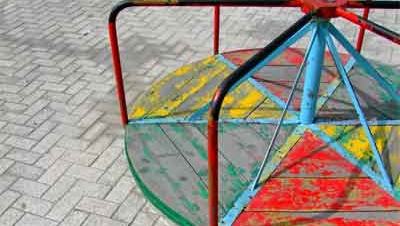

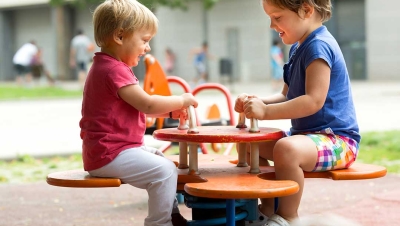




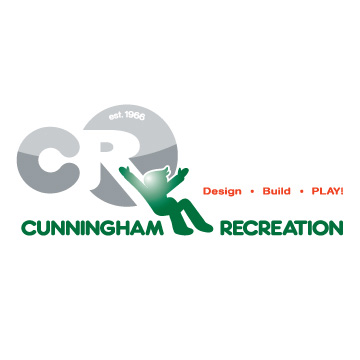






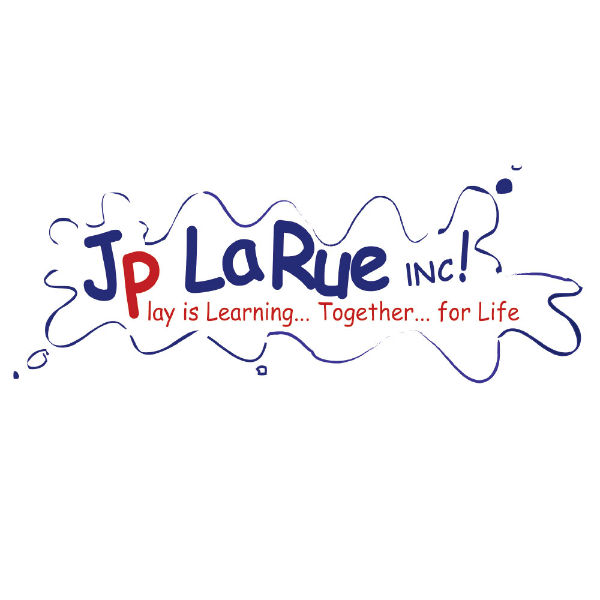

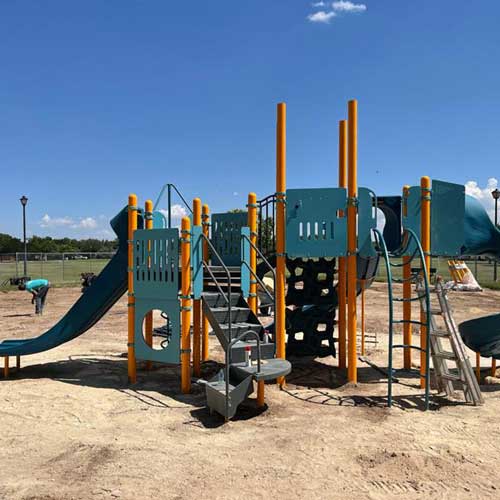
Add new comment